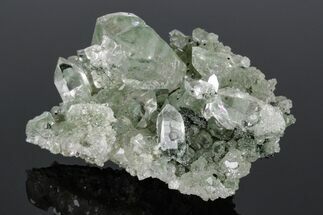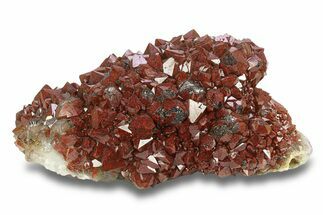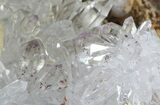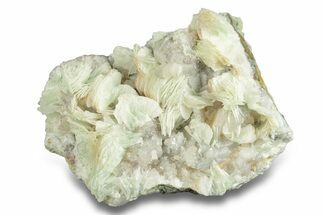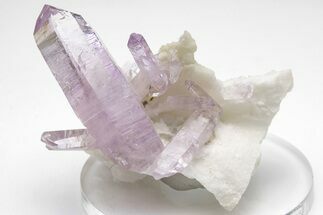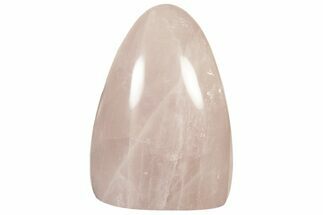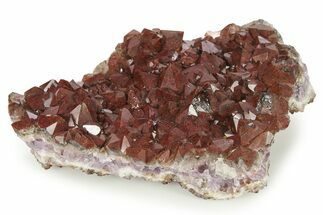This Specimen has been sold.
3.6" Quartz Crystal Cluster on Matrix - Namibia
This is a pristine mineral specimen, containing wonderfully formed quartz crystals with hematite flake inclusions, on a rocky matrix. Some of the quartz crystals became amethyst through the formation process, only adding to this specimens beauty.
Quartz is the name given to silicon dioxide (SiO2) and is the second most abundant mineral in the Earth's crust. Quartz crystals generally grow in silica-rich environments--usually igneous rocks or hydrothermal environments like geothermal waters--at temperatures between 100°C and 450°C, and usually under very high pressure. In either case, crystals will precipitate as temperatures cool, just as ice gradually forms when water freezes. Quartz veins are formed when open fissures are filled with hot water during the closing stages of mountain formation: these veins can be hundreds of millions of years old.
Amethyst is a purple variety of quartz (SiO2) that owes its violet color to natural gamma irradiation, iron impurities, and the presence of trace elements, which result in complex crystal lattice substitutions. It is considered a semi-precious gemstone, and just two centuries ago was considered to have a value on par with diamonds, sapphires, and rubies. The largest and best known amethyst deposits occur in southern Brazil and Uruguay, where they are found in hydrothermally-formed geodes, but many localities around the world produce an amazing variety of amethyst crystals and formations. They are almost always formed in medium- to high-temperature geological settings.
SPECIES
Quartz & Hematite
LOCATION
Goboboseb Mountains, Brandberg Area, Namibia
SIZE
3.6" long, 2.7" wide, 2.4" tall
CATEGORY
SUB CATEGORY
ITEM
#46022
 Reviews
Reviews
